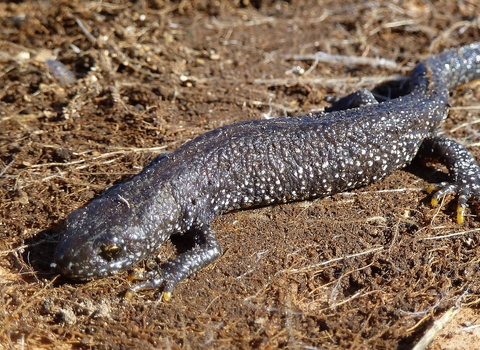
©Joy Russell
Great crested newt
With its prominent, wavy crest, the great crested newt, also known as the 'warty newt', looks like a mini dinosaur! This protected species favours clean ponds during the breeding season.
Enw gwyddonol
Triturus cristatusPryd i'w gweld
March to OctoberGwybodaeth am rywogaethau
Ystadegau
Length: up to 17cmAverage lifespan: 6-15 years
Protected in the UK under the Wildlife and Countryside Act, 1981. Priority Species under the UK Post-2010 Biodiversity Framework. Listed as a European Protected Species under Annex IV of the European Habitats Directive.
